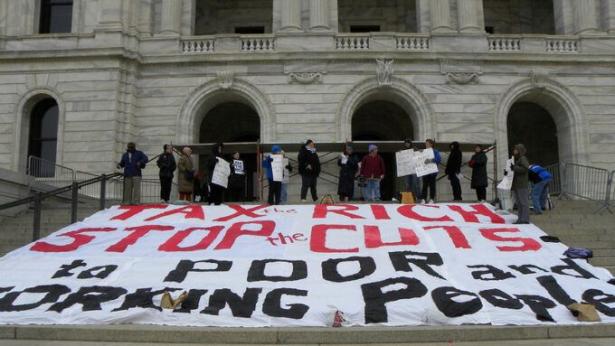America’s social studies textbooks urgently need an update — on child labor. Our textbooks, ever since the middle of the 20th century, have been applauding the reform movement that gradually put an end to the child-labor horrors that ran widespread throughout the early Industrial Age. Now those horrors, here in the 21st century, are reappearing.
The number of kids employed in direct violation of existing child labor laws, analysts at the Economic Policy Institute this past March reported, has soared 283 percent since 2015 — and 37 percent in just the last year alone. Last week brought the alarming news that three Kentucky-based McDonald’s franchises had kids as young as 10 working at 62 stores in four different states. Some of these under-working age children were working as late as 2 a.m.
Lawmakers at the state level, meanwhile, are moving to weaken — and even eliminate — existing limits on when and where kids can be working. One bill in Iowa introduced earlier this year, EPI researchers note, would let kids “as young as 14” labor in workplaces ranging from meat coolers to industrial laundries. In Arkansas, legislation recently signed into law axes requirements that the state “verify the age of children younger than 16 before they can take a job.”
Amid this rush to undo protections for kids, adds a New York Times analysis, pending legislation that would “crack down on companies’ use of child labor has gone nowhere.”
How do cheerleaders for erasing protections for kids justify their anti-child-labor-law offensive? Jobs for the youngest among us, they argue, build character.
“We have sheltered our kids so much they’ve forgotten how to do one of the things we’re all training them to do,” says Dan Zumbach, a Republican state senator in Iowa, “and that’s how to work.”
Over a century ago, in the initial push against child labor, no American did more to protect kids from sophistry like that than the noted educator and philosopher Felix Adler, the founder of the Ethical Culture Society. In 1887, under that society’s auspices, Adler sounded the child labor alarm before a packed house at Manhattan’s famed Chickering Hall.
The “evil of child labor,” Adler related to some 1,500 onlookers, “is growing to an alarming extent.” In New York City alone, some 9,000 children as young as eight were working in factories. The entire state of New York had only two inspectors looking out for the welfare of working kids. Many of those kids, as a result, “could not read or write” or even knew “the state they lived in.”
By the end of 1904, as the founding chair of the National Child Labor Committee, Adler had helped broaden the battle against exploiting kids. He railed against the “new kind of slavery” that had some 60,000 children under 14 working in Southern textile mills up to 14 hours a day, up from “only 24,000” just five years earlier.
Adler put full responsibility for this child-unfriendly state of affairs on those he called America’s “money kings.”
“Child labor is cheap labor,” Adler would explain. “That thought never enters the mind of the cheap labor employer. Business is business.”
But Felix Adler didn’t just campaign for laws to limit child labor. Lawmakers must also, he believed, limit the incentives that drive employers to exploit kids. They must refuse to let the rich keep as much as they could grab — by using taxes to cap the incomes of the America’s most financially favored. The specific vehicle he proposed for accomplishing that capping: a tax rate of 100 percent on all income above the point “when a certain high and abundant sum has been reached, amply sufficient for all the comforts and true refinements of life.”
Such a levy, said Adler, would tax away “pomp and pride and power.”
Adler’s relentless advocacy for capping the incomes of America’s rich would help inspire, after the United States entered World War I, a national campaign for a 100-percent top income rate on America’s highest incomes. That campaign would have a remarkable impact. In 2018, lawmakers in Congress would raise the nation’s top marginal income tax rate up to 77 percent, 10 times the 7-percent top tax rate in place just five years earlier.
Nearly a quarter century later, during World War, President Franklin Roosevelt would renew Adler’s call for a 100-percent top tax rate on the nation’s super rich. By the war’s end, lawmakers had okayed a top rate — at 94 percent — nearly that high. By the Eisenhower years, that top rate had leveled off at 91 percent.
Felix Adler would never see the full scope of his victory. He died in 1933. But by the mid-20th century those inspired by him had won on both his key advocacy fronts. By the 1950s, America’s rich could no longer keep all they could grab, and masses of mere kids no longer had to labor so those rich could profit.
The triumphs Adler helped animate have now come undone. We need to recreate them.


Spread the word